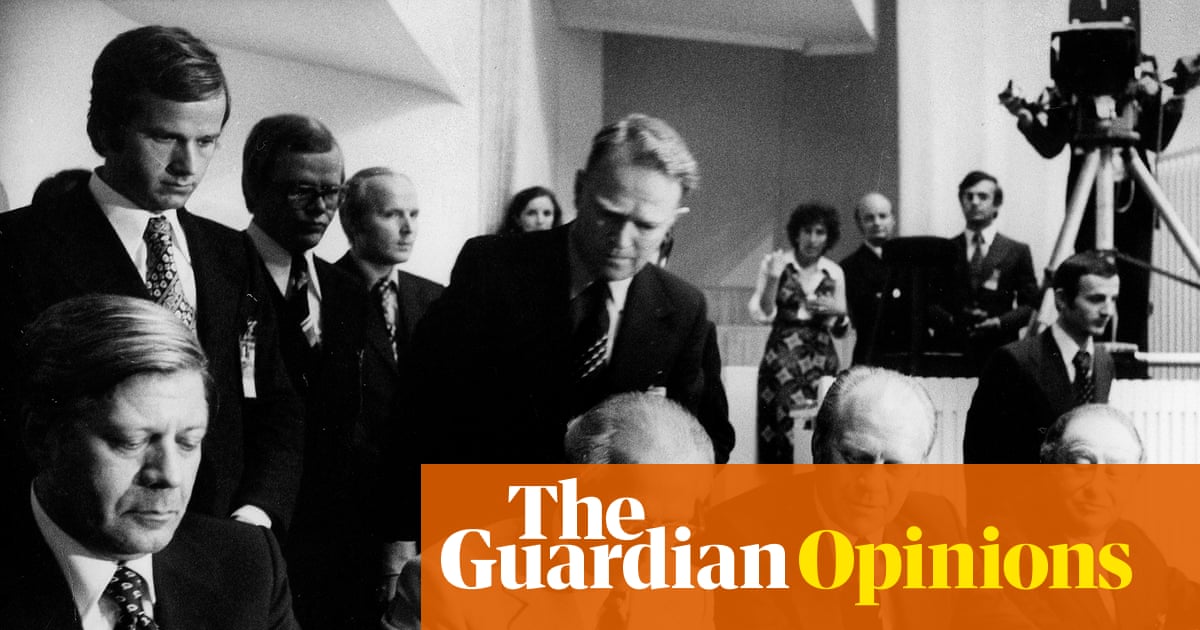Vladimir Putin will probably never give up on his attempts to bring Ukraine into Russia – which is where it belongs, according to his warped view of history. Those who oppose him tend to fall out of windows or suffer other “accidents” or go to prison.
If he agrees to a ceasefire, it will be only to gain time to replenish his forces before trying again. All that would stop him then would be armed peacekeepers of some kind, as is already being discussed. If someone replaces him from his inner circle, there is unlikely to be change.
However, somewhere well-hidden in Moscow, there must be people yearning for real peace, which would include recognising Ukraine as a sovereign country, just as during the cold war there were people fairly well-hidden in the communist establishment who yearned for democracy. They got their chance when Mikhail Gorbachev became leader in 1985. Sadly, the chance was bungled.
While waiting with slender hopes for the appearance of these benign forces, it is worth reminding everyone that there is an organisation in place with many of the skills and machinery for promoting democracy and peace in Europe. This is the Organization for Security and Cooperation in Europe (OSCE), which is about to celebrate the 50th anniversary of its founding document, generally known as “the Helsinki final act”.
The accord was signed in the Finnish capital on 1 August 1975 by 35 presidents, prime ministers and other leaders from both sides of the iron curtain: all of Europe, east and west, plus the Soviet Union, the United States and Canada. Only Maoist Albania declined Finland’s invitation to explore how adversaries, armed to the teeth with nuclear and conventional weapons, could find some common ground as the basis for eventual peace.
The adoption of the Helsinki final act was the dramatic and unexpected product of nearly three years of intense negotiation. Moscow and its allies wanted to put a seal on the postwar order in Europe, including the division of Germany and Soviet rule over the unhappy people of central and eastern Europe. During those three years, however, it was turned around, mainly by the nine members of the European community – in which Britain played an important role – to become instead an exciting agenda for change.
The final act allowed frontiers to be changed by peaceful means, thereby keeping open the road to German (and Irish) unification. It committed signatories to increase military transparency through a catalogue of “confidence-building measures”, and it defined an ambitious set of activities to facilitate trade, cultural contacts and the freer movement of people and information “of all kinds”.
Most significantly of all, as it turned out, it pledged signatories to “respect human rights and fundamental freedoms, including the freedom of thought, conscience, religion or belief”, stipulating that this was an essential basis for peace in Europe.
In the following years, the authoritarian governments that signed the final act made only small, grudging moves towards implementing those pledges. But they were eagerly taken up by dissidents, who collected thick dossiers of abuses of human rights to present to liberal governments and pressure groups, which then forced the Soviet Union to accept human rights as a subject for negotiation.
In other words, a factor in mutual security was how governments treat their people. This was an important innovation in international diplomacy. Gradually this intense activity around human rights in the Soviet empire helped to punch holes in the iron curtain, weaken the regimes and lay some of the groundwork for the peaceful ending of the cold war.
This became known as the “Helsinki effect”. The legitimacy of the final act derived from the fact that it was not a stitch-up between great powers but the result of 35 states negotiating doggedly until they reached consensus.
Will there be another “Helsinki effect”? Not in that form, and certainly not immediately, as repression in Putin’s Russia is harsher than that of the ailing Soviet Union in its dying days. The Russian president has also severely weakened the OSCE by violating most of its pledges, including its foundational commitments to international peace and the nonviolent settlement of disputes.
after newsletter promotion
Yet the world’s largest regional security organisation continues to operate, now with 57 participating states and a dozen missions in the field run from a secretariat in Vienna and an office for democratic institutions and human rights in Warsaw.
While often overlooked by the media, it still does valuable work promoting human rights, conflict prevention and honest elections. Importantly, the OSCE remains uniquely inclusive – it is the sole regional organisation of which Ukraine, the US and Russia are members – and it possesses longstanding experience and considerable expertise in promoting cooperation. It has the potential to help broker and monitor a peace agreement to end the war in Ukraine when the time is right.
On Thursday, member states will congregate in Helsinki to celebrate the 50th anniversary of the final act, in the same Finlandia Hall where it was signed. The accord was a masterpiece of diplomacy and a milestone in European history whose vision remains as relevant as ever: a peaceful and cooperative Europe whose governments respect international law and protect human rights.
Its institutional offspring, the OSCE, cannot realise this noble vision by itself, but it remains an important vehicle for seeking peace through diplomacy.
-
Kai Hebel is author of Britain, Détente, and the Helsinki CSCE (Conference on Security and Cooperation in Europe); he is assistant professor of international relations at Leiden University. Richard Davy is the author of Defrosting the Cold War and Beyond
